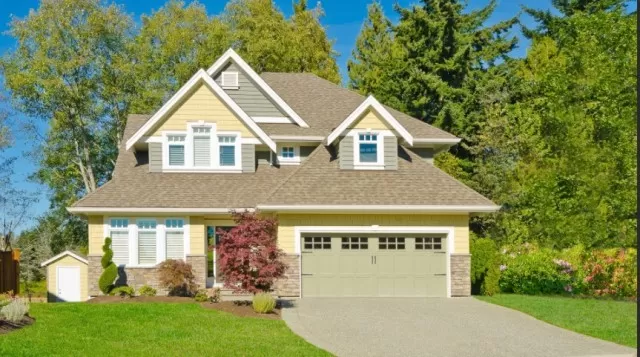Drawbacks of Purchasing New Construction Homes. The allure of owning a pristine, never-before-inhabited home is a dream cherished by many prospective homeowners.
However, this alluring vision should be evaluated with a discerning eye, as the excitement of new construction comes hand in hand with its share of potential drawbacks. Amidst the exhilaration of crafting a living space to your exact specifications, it’s crucial to acknowledge that a brand-new house doesn’t always guarantee an ideal living experience. As you tread the path of contemplating new constructionEmbracing the path of new construction homeownership involves a balanced perspective that considers both the allure and the intricacies of this journey. As you embark on the process of crafting your dream home, these insights act as guiding beacons to navigate the landscape with clarity. Whether you choose new construction or a more seasoned abode, your decision will be fortified with a deep understanding of the choices before you.
Higher Expenses Associated with Purchasing Newly Built Homes

The Elevated Price Tag of Modern Dwellings.
When delving into the realm of real estate, it becomes evident that the value assigned to pre-existing residences hinges on factors such as their square footage, geographical location, and overall craftsmanship.
However, the narrative takes a distinct turn when one ventures into the realm of new constructions. In such cases, the expenses incurred are not limited solely to the aforementioned aspects.
In addition to the fundamental elements, buyers are also burdened with supplementary construction expenditures. These encompass a wide spectrum, ranging from the installation of essential utilities to the establishment of driveways, sidewalks, and sewer lines.
While these elements undoubtedly enhance the convenience and functionality of a newly built home, they come at a noteworthy cost.
This financial burden can propel the final price of a freshly constructed residence to a staggering 15 to 20 percent higher than the price tag attached to a comparable existing abode. Thus, the decision to opt for new construction entails not just the acquisition of a physical structure, but an intricate web of hidden costs that can significantly impact the overall affordability of the property.
Absence of Greenery: A Pervasive Characteristic of New Residential Areas
The Struggle for Foliage in Developing Subdivisions.
One of the distinct traits that often define new subdivisions is their stark lack of lush vegetation.
In such nascent communities, the landscape presents a barren and desolate picture. The reason behind this visual void lies in the slow pace of nature – the growth of trees, a vital component of an appealing environment, is a process that demands patience.
Thus, if your vision of an ideal dwelling involves envisioning your abode nestled beneath the canopy of majestic oaks, it would be prudent to redirect your housing search towards established neighborhoods adorned with well-developed and mature trees.
The allure of a home surrounded by nature’s splendor is undeniable.
However, the reality in newly emerging residential areas often paints a contrasting picture. The deliberate absence of mature trees in these locales is a testament to the time it takes for the arboreal landscape to flourish.
Aspiring homeowners with a penchant for natural beauty might find their aspirations more readily fulfilled in neighborhoods where the passage of time has allowed towering trees to take root, transforming the surroundings into an inviting and verdant sanctuary.
Financial Implications of Change Orders in New Home Construction

Navigating the Costly Terrain of Alterations.
The process of constructing a new home offers a unique opportunity for homeowners to customize their living space according to their preferences.
However, while the prospect of making alterations during construction might be tempting, it’s imperative to approach such decisions judiciously. Change orders, which permit modifications after the construction has commenced, can quickly prove to be a double-edged sword, especially from a financial standpoint.
Even seemingly minor adjustments, such as opting for a wooden porch railing instead of a steel one, can result in substantial cost escalations.
These financial repercussions arise due to the complex nature of the construction process. Every change, irrespective of its apparent simplicity, often triggers a series of interdependent adjustments that resonate throughout the project.
As a consequence, what initially seems like a negligible alteration can swiftly translate into thousands of additional dollars added to the overall expenditure.
While the allure of tailoring your new home to match your preferences is undeniable, it’s crucial to exercise caution when considering change orders.
Reserve such decisions for instances where they are genuinely essential, ensuring that the benefits outweigh the potential financial strain. By treading carefully in the realm of alterations, homeowners can avoid unwittingly transforming their dream home into a financial burden.
Restricted Freedom in Contractor Selection
Narrowed Horizons: Builder Choices in New Residential Developments.
As the allure of a specific plot, perhaps nestled at the cul-de-sac’s edge within a burgeoning subdivision, captivates your imagination, it’s crucial to acknowledge a potential limitation that might shape your home construction journey.
The freedom to handpick your builder, a decision often brimming with significance, can, in certain scenarios, be curtailed.
Numerous residential developments embark on exclusive agreements with a limited roster of builders.
In such cases, the autonomy to select an external builder might not be an option available to you. This unique arrangement, while aiming to maintain consistency and streamline the construction process within the development, can inadvertently confine your choices when it comes to the craftsmanship behind your dream home.
The ramifications of this limited pool of builders transcend beyond architectural aesthetics.
Your preferences, visions, and expectations might be better aligned with a builder outside the sanctioned list. However, the contractual constraints imposed by the development could inhibit the realization of these aspirations.
The decision to settle within a predefined builder roster or to advocate for greater flexibility in your choice can be a pivotal one.
It requires a nuanced assessment of your priorities, the development’s policies, and your willingness to compromise. Ultimately, striking a balance between your dream location and the creative agency you desire in your home’s construction is key to ensuring a gratifying living experience.
\”Increased Financial Burden: \’Specials\’ Elevate Mortgage Costs\”

Unveiling the Financial Impact of Infrastructure Assessments.
When contrasting the dynamics of established neighborhoods with those of emerging developments, a distinctive financial nuance comes to light that can significantly affect homeowners.
In well-established locales, the financial burden associated with streets, gutters, and storm drains has been absorbed through previous payments. However, the scenario shifts considerably within new residential developments, where homeowners bear a share of the costs attributed to these essential infrastructure components.
These supplementary expenses are colloquially referred to as “specials,” and their implications for your financial commitment can be profound.
The concept of “specials” underscores the fact that these charges are indeed special, in the sense that they are not commonplace in established areas. As you embark on the journey of owning a home in a new development, Be Prepared to accommodate these additional costs within your budgetary framework.
While the allure of a newly constructed home can be captivating, it’s vital to grasp the potential financial ramifications.
The inclusion of “specials” into your financial equation can exert a tangible impact on your monthly mortgage obligation. In some cases, this impact can reach or even exceed $200, leaving homeowners to navigate the consequences of a heftier financial commitment.
Before committing to a property in a new development, it’s prudent to conduct a comprehensive analysis of the associated financial aspects.
By factoring in these potential “specials,” you can make an informed decision that aligns with your budget and financial aspirations.
*The information is for reference only.